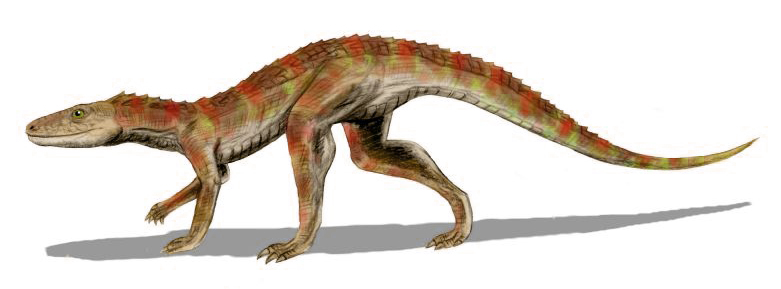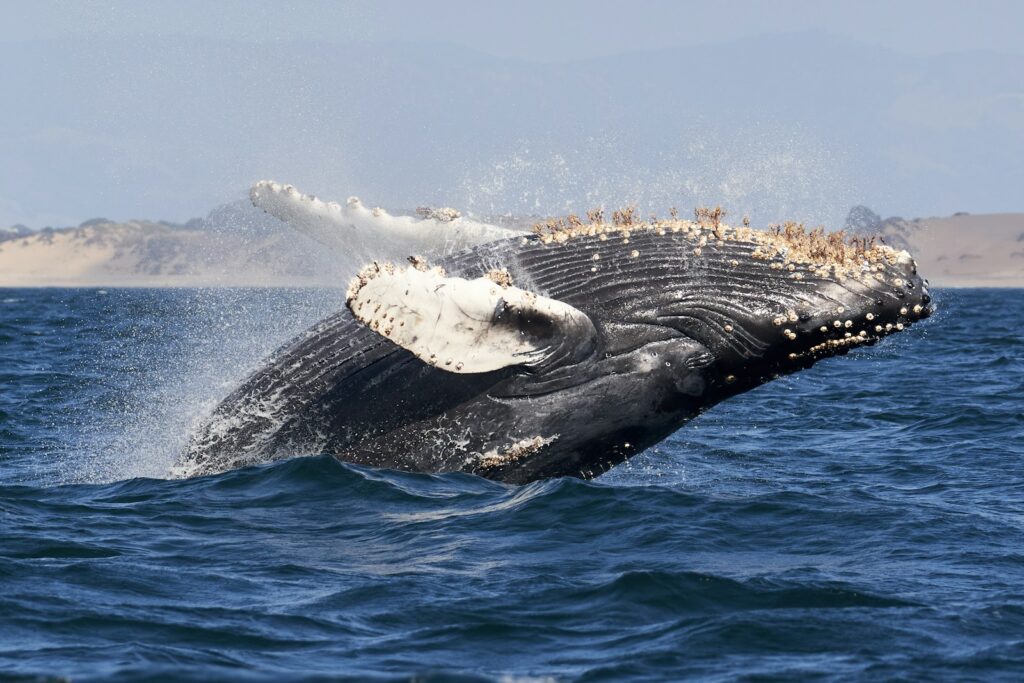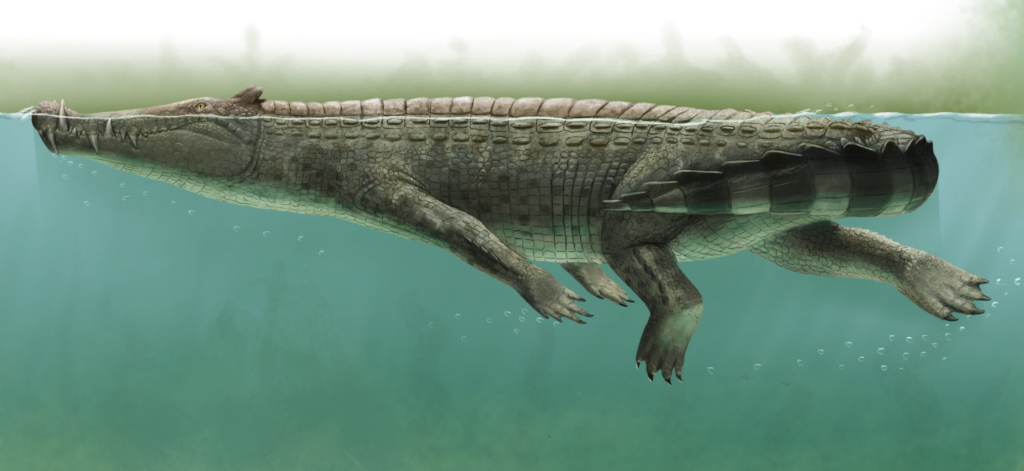The journey of terrestrial vertebrates back to aquatic environments represents one of evolution’s most fascinating narratives. Over millions of years, numerous lineages independently abandoned their terrestrial lifestyles to exploit the rich resources of rivers, lakes, and oceans. This remarkable story of convergent evolution spans diverse taxonomic groups, from ancient crocodylomorphs to modern otters, demonstrating how different evolutionary pressures can produce similar adaptations across unrelated species. The transition from land to water required profound anatomical and physiological changes, creating an extraordinary showcase of natural selection at work. This evolutionary journey illustrates nature’s remarkable adaptability, as creatures with terrestrial ancestors developed streamlined bodies, specialized limbs, enhanced diving capabilities, and unique sensory adaptations to thrive in aquatic environments.
The Evolutionary Lure of Aquatic Environments

Throughout evolutionary history, water environments have repeatedly drawn terrestrial species back to aquatic lifestyles. This pattern occurred not because of random drift but due to specific ecological advantages offered by aquatic habitats. Water environments provide abundant food resources, including fish, crustaceans, and aquatic plants that represent relatively untapped niches for terrestrial vertebrates. Additionally, aquatic habitats can offer refuge from terrestrial predators and competitors, creating evolutionary sanctuaries for species that can adapt to these conditions. Climate fluctuations throughout Earth’s history have periodically altered terrestrial ecosystems, sometimes making aquatic habitats comparatively more stable and resource-rich. Furthermore, water provides buoyancy that supports large body sizes while reducing the energetic costs associated with movement against gravity. This combination of factors has repeatedly incentivized terrestrial lineages to evolve aquatic adaptations, despite the significant physiological challenges involved in this transition.
Early Crocodylomorphs: Masters of Dual Existence

Crocodylomorphs, the ancient group that includes modern crocodilians and their extinct relatives, represent one of the earliest and most successful vertebrate lineages to adapt to semi-aquatic lifestyles. These remarkable reptiles evolved from fully terrestrial ancestors during the Triassic Period, gradually developing adaptations that allowed them to exploit both land and water environments. Their evolutionary innovations included laterally compressed tails for powerful swimming, elevated nostrils for breathing while mostly submerged, and specialized valve-like structures to prevent water from entering their respiratory systems. Many early crocodylomorphs maintained relatively long limbs compared to modern species, indicating they retained significant terrestrial capabilities. The diversity of crocodylomorph body plans throughout their evolutionary history demonstrates their remarkable adaptability, with some lineages evolving toward increasingly aquatic lifestyles while others maintained or even enhanced their terrestrial capabilities. Their evolutionary success is evidenced by their persistence across multiple mass extinction events, establishing them as one of the most enduring vertebrate lineages.
Mesozoic Marine Reptiles: Rulers of Ancient Seas

The Mesozoic Era witnessed an extraordinary radiation of reptilian lineages into marine environments, producing some of the most specialized aquatic vertebrates in Earth’s history. Ichthyosaurs evolved fish-like body forms with remarkable convergence to modern dolphins, developing streamlined bodies, vertical tail flukes, and live birth adaptations that freed them from returning to land for reproduction. Plesiosaurs took a different evolutionary path, developing extraordinary flipper-like limbs arranged in a four-paddle configuration unlike any modern animal, allowing unique swimming mechanics that combined power and maneuverability. Mosasaurs, relatives of modern monitor lizards, evolved into massive marine predators with paddle-shaped limbs and elongated, powerful jaws lined with conical teeth perfect for capturing slippery prey. These diverse marine reptile groups demonstrated extraordinary specializations for aquatic life, including enhanced oxygen storage, modified sensory systems for underwater detection, and specialized reproductive adaptations. Though eventually becoming extinct during the end-Cretaceous mass extinction event, these marine reptiles dominated ocean ecosystems for over 150 million years, representing one of evolution’s most successful experiments in terrestrial-to-marine transitions.
Cetacean Evolution: From Hooves to Flukes

Perhaps the most dramatic terrestrial-to-aquatic transition occurred in the ancestors of modern whales and dolphins, who abandoned life on land entirely to become fully aquatic mammals. Fossil evidence reveals that cetacean evolution began with wolf-sized, hoofed mammals called pakicetids that lived near water approximately 50 million years ago, possessing unique ear structures that would later facilitate underwater hearing. As these early whale ancestors became increasingly aquatic, they developed a suite of remarkable adaptations, including the transformation of forelimbs into flippers, complete loss of hindlimbs (though vestigial pelvis bones remain), development of horizontal tail flukes for propulsion, and nostrils that migrated to the top of the head to form blowholes. This transition occurred relatively rapidly in evolutionary terms, with fully aquatic whales appearing within about 10 million years of their terrestrial ancestors. Modern cetaceans demonstrate extreme specialization for aquatic life, including the ability to dive to extraordinary depths, specialized respiratory systems for extended submersion, and sophisticated echolocation capabilities in toothed whales. The cetacean evolutionary journey represents one of the most thoroughly documented major transitions in vertebrate evolution, supported by an impressive fossil record that demonstrates the intermediate stages in this remarkable transformation.
Pinnipeds: The Compromise Solution

Seals, sea lions, and walruses—collectively known as pinnipeds—evolved a fascinating intermediate strategy between terrestrial and fully aquatic lifestyles. These carnivorous mammals descended from bear-like or weasel-like ancestors approximately 30 million years ago, developing specialized adaptations for an amphibious existence. Unlike cetaceans, pinnipeds retained functional hindlimbs, though these evolved into flipper-like appendages that could still support their weight on land, creating their characteristic shuffling terrestrial locomotion. Their forelimbs similarly transformed into flippers while maintaining some of the flexibility and dexterity of their terrestrial ancestors. Physiological adaptations include specialized blood oxygen storage capabilities, enabling extended underwater foraging dives without breathing. Despite these aquatic specializations, pinnipeds never completely abandoned land, still requiring solid surfaces for reproduction, molting, and social behaviors. This evolutionary compromise has proven remarkably successful, with pinnipeds colonizing environments from tropical shorelines to polar ice edges, demonstrating the viability of this intermediate adaptation strategy. The “halfway” evolutionary approach of pinnipeds illustrates that not all aquatic transitions culminate in fully aquatic forms like cetaceans, highlighting the diversity of successful evolutionary pathways.
Sirenians: The Ocean’s Gentle Herbivores

Manatees and dugongs—collectively known as sirenians—represent the only fully aquatic herbivorous mammals, having evolved from terrestrial mammalian ancestors that were likely related to modern elephants. Their evolutionary journey began approximately 50 million years ago, following a parallel but independent path to aquatic life from cetaceans. Sirenians developed specialized adaptations for their unique ecological niche, including dense bones that act as ballast to maintain neutral buoyancy while feeding on underwater vegetation. Their forelimbs evolved into flexible flippers that maintain surprising dexterity, allowing them to manipulate food items while feeding. Unlike other marine mammals, sirenians have relatively low metabolic rates, an adaptation that complements their herbivorous diet, which provides less energy than the carnivorous diets of other marine mammals. Modern sirenians possess specialized, constantly growing molar teeth that compensate for wear from abrasive plant materials and sediment ingested during feeding. The slow-moving, peaceful lifestyle of sirenians presents a striking contrast to most other marine mammals, demonstrating how different selective pressures can drive distinct evolutionary outcomes even within the same general pattern of terrestrial-to-aquatic transition.
Semi-Aquatic Rodents: Masters of Multiple Environments

Within the remarkably diverse order Rodentia, numerous lineages have independently evolved semi-aquatic lifestyles, creating fascinating examples of convergent evolution. Beavers represent one of the most specialized aquatic rodents, having developed webbed hind feet, valvular ears and nostrils that close underwater, transparent third eyelids for underwater vision, and dense, water-repellent fur with insulating properties. Muskrats evolved similar adaptations independently, including partially webbed hind feet, water-resistant fur, and specialized respiratory and circulatory adaptations for extended underwater activity. Capybaras, the world’s largest rodents, developed semi-aquatic lifestyles in South American wetlands, with eyes, ears, and nostrils positioned high on their heads to remain above water while mostly submerged. The water vole of Europe and the American water rat represent yet additional independent evolutions of semi-aquatic adaptations in rodent lineages. These multiple transitions demonstrate how the rodent body plan, characterized by small size, high reproductive rates, and dietary flexibility, provides an excellent foundation for exploiting semi-aquatic niches. The repeated evolution of similar adaptations across different rodent lineages highlights how consistent selective pressures can produce comparable adaptive responses in unrelated groups.
Mustelid Adaptations: Otters and Their Aquatic Expertise

Within the mustelid family, which includes weasels, badgers, and wolverines, otters represent the most aquatic specialized members, having evolved remarkable adaptations for hunting and thriving in water environments. The 13 living otter species demonstrate varying degrees of aquatic specialization, from river otters that divide their time between land and water to sea otters that rarely come ashore. Their adaptations include streamlined bodies that reduce drag while swimming and dense, layered fur that provides exceptional insulation in cold water, with sea otters possessing the densest fur of any mammal (up to one million hairs per square inch). Otters have developed strong, somewhat flattened tails that function as rudders and propulsion assists, along with partially or fully webbed feet that increase swimming efficiency. Physiological adaptations include enhanced blood oxygen storage capacity, allowing extended underwater foraging, and specialized sensory whiskers (vibrissae) that can detect prey movements underwater even in murky conditions. The sea otter has evolved additional specializations, including the ability to use tools like rocks to crack open shellfish and specially modified pouches of loose skin for storing both tools and food items. These varied adaptations across different otter species illustrate how a single family can produce multiple levels of aquatic specialization in response to different ecological niches.
Aquatic Birds: Diverse Solutions to Water Living

Birds have repeatedly evolved specialized adaptations for aquatic and semi-aquatic lifestyles, creating an extraordinary range of solutions to the challenges of water living. Penguins represent perhaps the most extreme aquatic specialization, having transformed their wings into flipper-like appendages incapable of flight but providing exceptional underwater maneuverability, making them essentially “flightless underwater flyers.” Diving birds like cormorants and loons have developed dense bones that reduce buoyancy, allowing them to pursue prey underwater more efficiently, along with specialized leg positions and webbed feet that provide powerful underwater propulsion. Surface-feeding waterfowl like ducks possess broad, flat bills with filtering structures called lamellae that efficiently strain food particles from water, representing specialized feeding adaptations for aquatic environments. Many aquatic birds have developed waterproof feathers through specialized preening glands that secrete oils, which birds distribute across their plumage to maintain insulation and buoyancy in water. The repeated evolution of aquatic adaptations across multiple bird lineages demonstrates the strong selective pressures favoring exploitation of aquatic food resources, creating one of the most diverse assemblages of aquatic specialists among vertebrate groups.
Reproductive Challenges and Solutions in Aquatic Vertebrates

Reproduction presents unique challenges for animals that have transitioned from terrestrial to aquatic lifestyles, leading to diverse evolutionary solutions across different lineages. Many semi-aquatic species, including most turtles, crocodilians, and pinnipeds, retain ancestral patterns of returning to land for egg-laying or birthing, maintaining this crucial terrestrial connection despite otherwise aquatic adaptations. Cetaceans and sirenians evolved live birth capabilities that eliminated the need to return to land, developing specialized placental structures and birthing postures that facilitate underwater delivery while immediately allowing newborns to reach the surface for their first breath. Sea turtles represent a fascinating intermediate strategy, requiring land for egg-laying but otherwise living entirely marine lives, with females undertaking remarkably long-distance migrations to specific nesting beaches. Some fish-like aquatic animals, including ichthyosaurs, evolved ovoviviparity (egg retention within the mother until hatching) or viviparity (live birth with maternal nutrition), freeing them from land-based reproduction. Parental care strategies likewise needed adaptation, with sea otters famously nursing their pups on their chest while floating on their backs, and whales producing extremely energy-rich milk that allows rapid offspring development. These diverse reproductive adaptations demonstrate how the fundamental challenge of reproduction shaped the evolutionary trajectories of aquatic vertebrates in different ways.
Sensory System Adaptations for Underwater Life

The transition to aquatic environments required profound modifications to sensory systems originally adapted for terrestrial existence. Vision required significant adaptations, as water absorbs light differently than air, with many aquatic vertebrates evolving specialized corneas and lenses that compensate for the refractive properties of water. Hearing underwent substantial modifications in aquatic mammals, with cetaceans developing acoustic fat pads that channel underwater sound to their ears and abandoning external ear structures that would create drag. Mechanoreception gained new importance underwater, with specialized lateral line systems evolving in fish and some amphibians, while mammals like otters and pinnipeds developed extraordinarily sensitive whiskers (vibrissae) that can detect prey movements and water disturbances. Chemical sensing diversified, with some aquatic organisms developing specialized olfactory systems that can detect waterborne molecules, while others rely more heavily on taste receptors distributed across their bodies. Perhaps most impressively, some lineages evolved entirely novel sensory capabilities, most notably the echolocation systems of toothed whales and dolphins, which produce high-frequency clicks and process returning echoes to create detailed acoustic “images” of their surroundings. These sensory adaptations demonstrate how the physical properties of water drove specialized evolutionary responses across different vertebrate groups.
Convergent Evolution Across Aquatic Lineages

The repeated independent evolution of aquatic adaptations across different vertebrate lineages provides one of biology’s most striking examples of convergent evolution—the process whereby unrelated organisms develop similar traits when facing similar environmental challenges. This convergence is particularly evident in body shape, with fast-swimming predators from different evolutionary backgrounds (including ichthyosaurs, cetaceans, and sharks) all developing streamlined, fusiform bodies with reduced external projections that minimize drag. Propulsion mechanisms similarly converged, with vertical tail flukes evolving independently in both ichthyosaurs and cetaceans, despite their vastly different ancestries. Thermoregulatory adaptations show parallel evolution, with diverse lineages developing insulating blubber layers, specialized circulatory systems that conserve core heat, and countercurrent heat exchange systems in extremities. Diving physiology demonstrates remarkable convergence across unrelated groups, with enhanced oxygen storage capabilities evolving independently in marine mammals, diving birds, and aquatic reptiles. Even at the molecular level, convergent evolution appears in the parallel development of similar hemoglobin modifications that enhance oxygen binding capabilities in different aquatic lineages. These patterns of convergence illustrate the power of natural selection to produce similar solutions when organisms face comparable environmental challenges, regardless of their evolutionary starting points.
The Future of Aquatic Adaptations in the Anthropocene

As human activities increasingly transform global ecosystems, aquatic vertebrates face unprecedented challenges that are likely to shape their ongoing evolution. Anthropogenic climate change is altering water temperatures, chemistry, and circulation patterns, creating selective pressures that may favor species with greater thermal tolerance ranges or physiological flexibility. Ocean acidification particularly threatens organisms with calcium carbonate structures, potentially creating evolutionary pressure for modified shell formation in affected species. Human infrastructure, like dams, has fragmented aquatic habitats, potentially driving localized adaptations in isolated populations or favoring species with greater dispersal capabilities that can navigate these obstacles. Plastic pollution represents a novel selective pressure, with some evidence suggesting that species capable of avoiding plastic ingestion or having heightened detoxification systems may have selective advantages. Noise pollution from shipping and industrial activities creates challenges for animals that rely on acoustics for communication and navigation, potentially driving selection for modified communication frequencies or alternative sensory strategies. While evolution typically operates over extended timeframes, the rapid pace of anthropogenic change may create strong selection pressures favoring certain adaptations while pushing other specialized aquatic species toward extinction before they can adapt. Understanding these processes remains crucial for developing effective conservation strategies for these.




